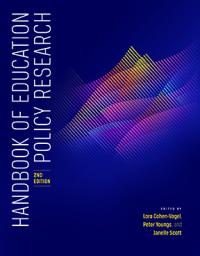Data Science in Education Administration, Policy, and Practice
AERA members: Please enter your coupon code in the shopping cart coupon discount field.
Data Science in Education Administration, Policy, and Practice
Alex J. Bowers
Click here to view and purchase Handbook of Education Policy Research, 2nd Edition
Title information
Abstract
Education data science has recently come to the fore as education systems globally produce increasing amounts of data. Yet calls for applying machine learning, pattern analysis, and data visualizations to support decision making in organizations are nothing new, as these calls for what has come to be known as data science have been consistent for over 50 years. The purpose of this chapter is to overview the main components of education data science and provide examples of how it can help inform education research, policy, and practice. Data science includes communicating with data; data analysis; and management of data, combined with domain knowledge. It also includes informing management and policy decisions by communicating and visualizing patterns, predictions, and the outcomes of decisions. It includes machine learning and the use of open and shared data and code; ethics; and attention to issues of bias, equity, and community, as well as a focus on prediction accuracy versus model fitting.
Keywords: data science; decision making; machine learning

